How to eliminate a headache in children with medication?
Contents of
- Causes of frequent headache in children
- How to treat children with a headache?
- What should I do with a child's headache?
- When do I need help with a doctor?
- What tablets can children suffer from a headache?
- No-shpa from a child's headache
- When can I give a baby No-shpu?
- Contraindications No-spikes for children
- Dosage No-shps for children
- No-shpa in children's practice: video
- Analginum for children with headache
- Special instructions for use Analgin
- Paracetamol for headache to children
- Dosage forms and dosages
- Aspirin or paracetamol? Advises Dr. Komarovsky, video
- Spazgan to children from a headache
- Citramon to a child from a headache
- Moment of a child's headache
- Advice to parents
- Children's headache and how to fix it, video
A child's headache may occur for various reasons. What medicines can be given to children to relieve pain?
Kids often complain of a headache. What should be done and whether it is possible to give medicines to children for the removal of a headache before the arrival of a doctor? What kind of headache medications are used in children's practice? Let's understand.
Causes of frequent headache in children
Pediatric headache can be caused by various reasons. Consider the most common sources of headache in children.
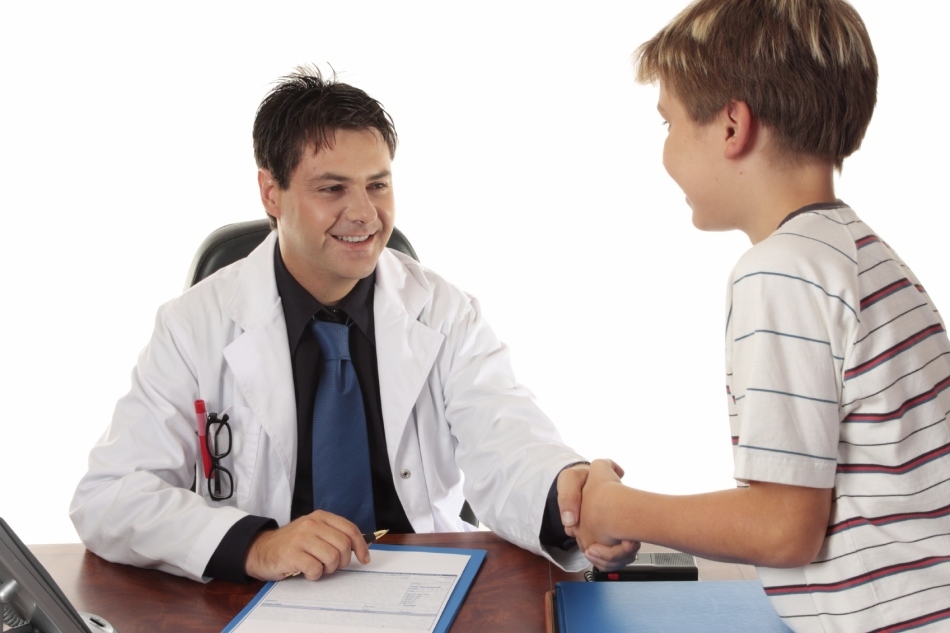 At the doctor's office
At the doctor's office Headache of tension .This kind of pain occurs most often in children's practice. The nature of pain - symptoms of compression of a constant nature of varying intensity. Pain is associated with the child's physical or psycho-emotional activity. As a rule, such pain does not cause serious problems with the health of the child.
Migraine .The nature of pain - strong unilateral pain sensations in the form of attacks. Pain can be accompanied by hearing, vision, balance. Migraine attacks often provoke nausea and vomiting.
Increased intracranial pressure .This medical term is not an independent disease. Increased intracranial pressure accompanies many diseases( brain tumors, meningitis, hydrocephalus).Therefore, the headaches associated with this problem can be avoided if you treat the underlying pathology.
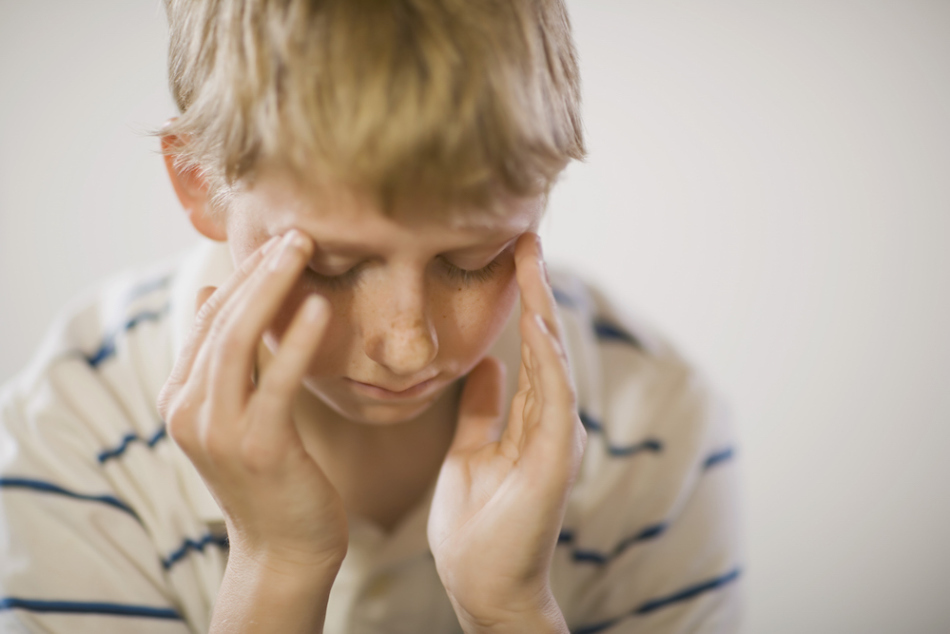 The problem with the child's eyes can cause headaches
The problem with the child's eyes can cause headaches Visual impairment .Eye strain with prolonged reading, watching TV, spending a lot of time in front of a computer can cause headaches.
Improper selection of glasses also causes prolonged head pain. Some eye diseases( glaucoma) cause severe pain in the eyes and cause a headache.
IMPORTANT: A comprehensive ophthalmological examination will help to identify the cause of a child's headache associated with visual impairment.
Problems in the musculoskeletal framework .Wrong posture, lack of exercise, trauma to the locomotor system often cause headaches. In this case, the consultation of an orthopedic specialist is recommended. Additional studies of bone and muscle tissue help identify the source of the headache.
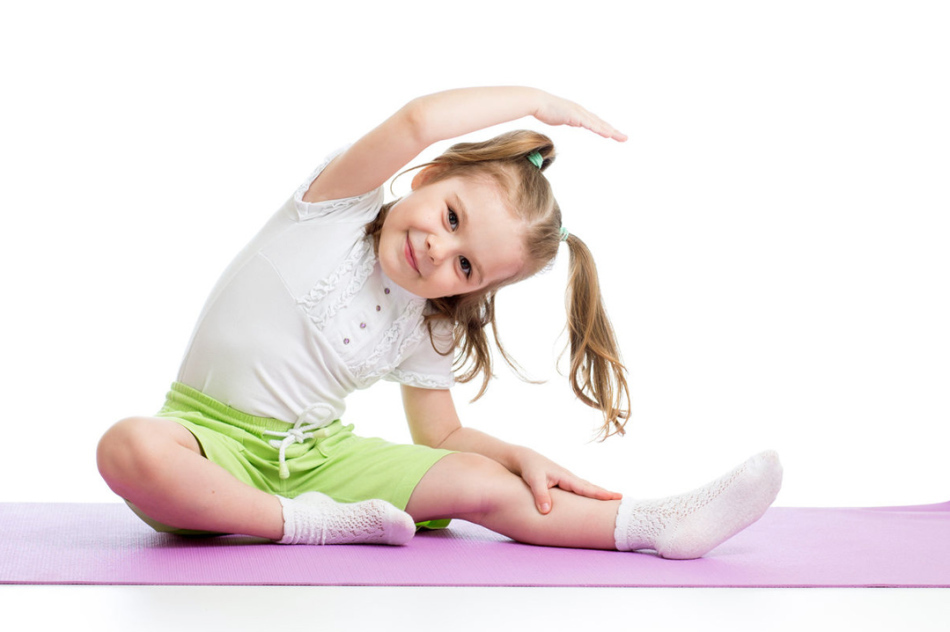 Sports exercises have a positive impact on the health of the baby.
Sports exercises have a positive impact on the health of the baby. IMPORTANT: Massage, therapeutic exercises, moderate physical activity have a positive effect on correcting problems associated with the spine and headache associated with diseases of the corset-muscular skeleton.
Mental disorders of the child .Anxious and depressed conditions, neuroses, fright, depressed mood are factors that can provoke headaches. An appeal to a psychotherapist will help to solve the negative causes and consequences of a child's mental trauma.
Irradiated or Reflected Pain .This kind of pain sensations delivers other organs, although the pain is felt quite elsewhere. So, inflammation of the maxillary cavities, ear diseases, sore throat with colds, can cause an irradiative headache in a child.
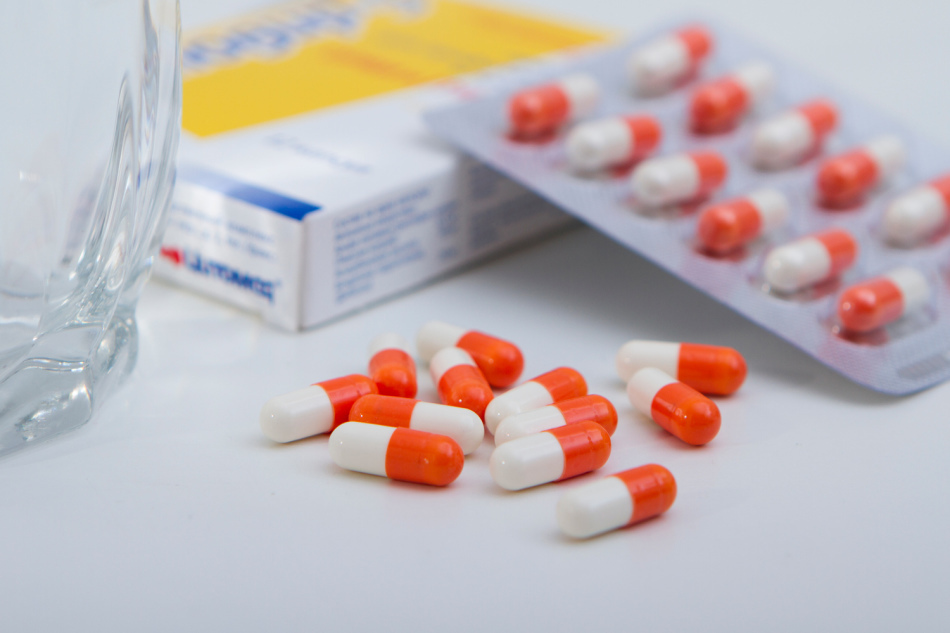 Medications to treat a headache
Medications to treat a headache Than to treat a headache for children?
You can not ignore the child's complaint of a headache. To panic also does not follow. Any pain has a cause and is a signal of a malfunction in the body.
What should I do if my child has a headache?
- If the child complains of a headache, find out the cause of the pain
- It is recommended to distract and calm the child, if possible put him to bed and calmly talk to him
- A whippy sweet tea will help relieve tension and calm the baby
- You can ventilate the room or even better - take a walk withchild in the open air, if weather conditions permit
- Allow the child to sleep and rest
- For persistent moderate pain the baby is allowed to give Ibuprofen or Paracetamol in dosage,age-appropriate child
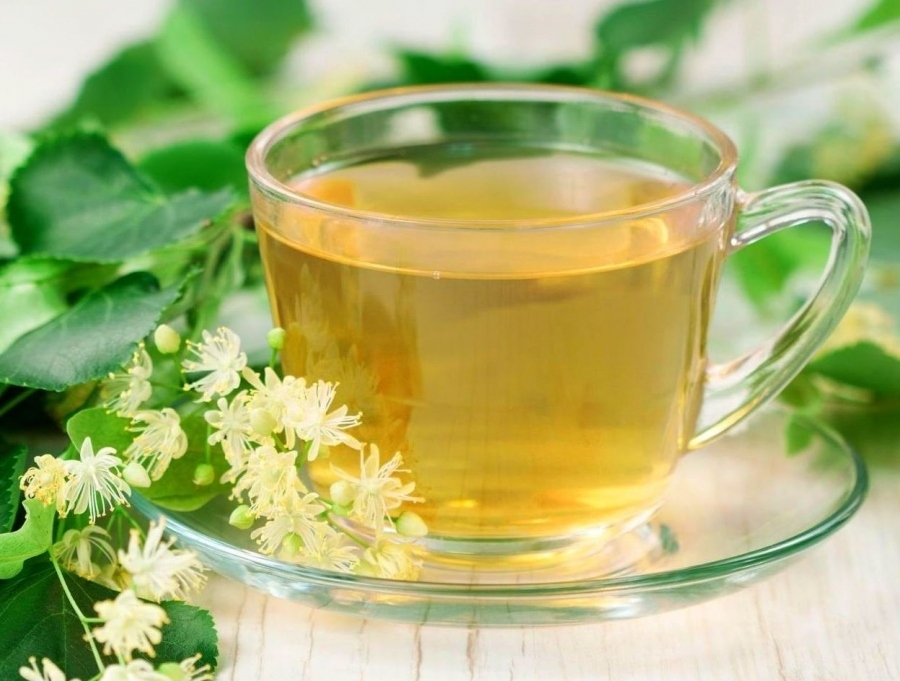 Non-sturdy sweet tea will help with headache
Non-sturdy sweet tea will help with headache IMPORTANT: If the measures taken do not improve the condition of the baby, and the child continues to feel bad, you should always consult a doctor.
When Do I Need A Doctor's Care?
It is recommended to consult a doctor immediately if at a headache occur:
- any disorders of consciousness
- speech distortion
- coordination disorder
- visual problems
- appearance of rash
- nausea and vomiting
- pain after traumatic brain injury
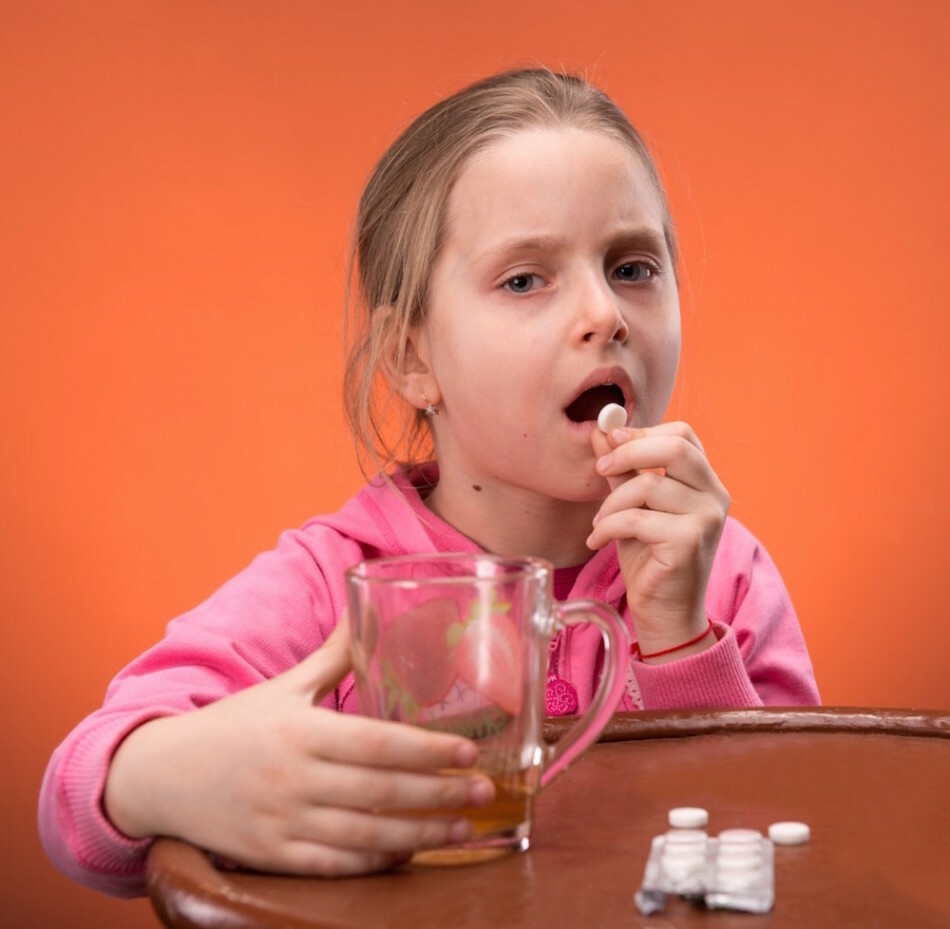 Tablets for children
Tablets for children What tablets can children fromheadache?
Often parents give "adult" medications to stop the headache in toddlers. This is a big mistake and a misconception.
IMPORTANT: It is not recommended to use medicines in children's practice intended for the treatment of adults, even if they have indications for treating the same symptoms of the disease.
Paracetamol and Ibuprofen are indicated for the relief of pain and heat before the arrival of a physician. The remaining pain medication is prescribed by the attending physician for medical reasons in a dosage according to the child's age.
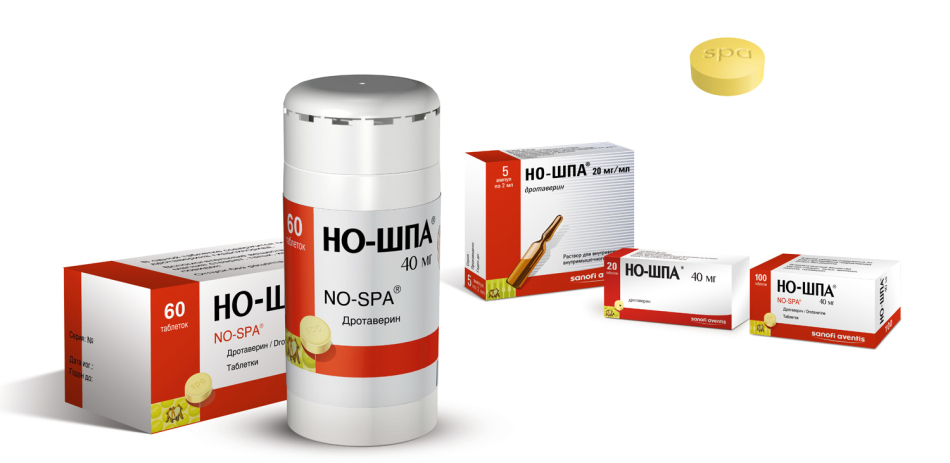 Drug No-shpa
Drug No-shpa No-shpa from a child's headache
No-shpa is a synthetic preparation containing the active substance drotaverine.
The medication has an antispasmodic effect, relieves spasms of smooth muscle muscles of internal organs and vessels. Drotaverin relaxes the smooth muscles of the gastrointestinal tract, urogenital system, bile ducts,
IMPORTANT: No-spa is not an anesthetic drug. The drug relaxes the walls of smooth muscles, and as a result - relieves pain, if it was associated with muscle spasms.
 No-shpa enhances the effect of antipyretics
No-shpa enhances the effect of antipyretics When can I give a baby No-shpu?
No-shpa is prescribed by the doctor in dosage, according to the age of the baby. In emergency cases it is possible to apply the medicine before the doctor comes. But-shpa relieves pain only in cases associated with spasms of smooth muscles and blood vessels.
So, at high temperature No-shpa enhances the action of antipyretic, anti-inflammatory and analgesic medicines, as it has a vasodilating action.
IMPORTANT: At a high temperature, a child can give 0.5 No-shpy tablets together with antipyretic drugs Paracetamol or Ibuprofen. The baby feels better soon.
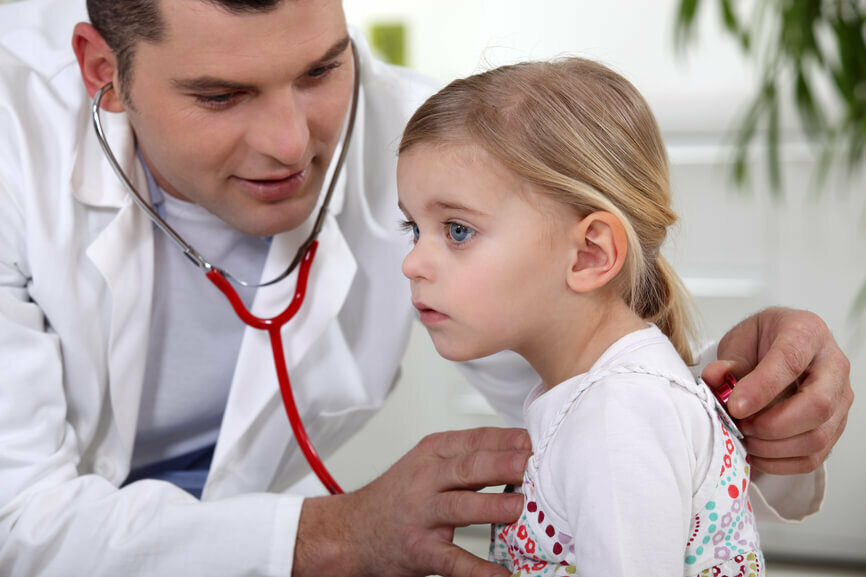 Child at a doctor's appointment
Child at a doctor's appointment Contraindications No-shps for children
No-spawning is not applied in the following cases:
- children under 6 years old
- bronchial asthma
- low blood pressure
- addiction to allergy
- renal and hepatic insufficiency
Dosage No-shps for children
IMPORTANT: Children under one year are strictly prohibited from using No-shps in all dosage forms.
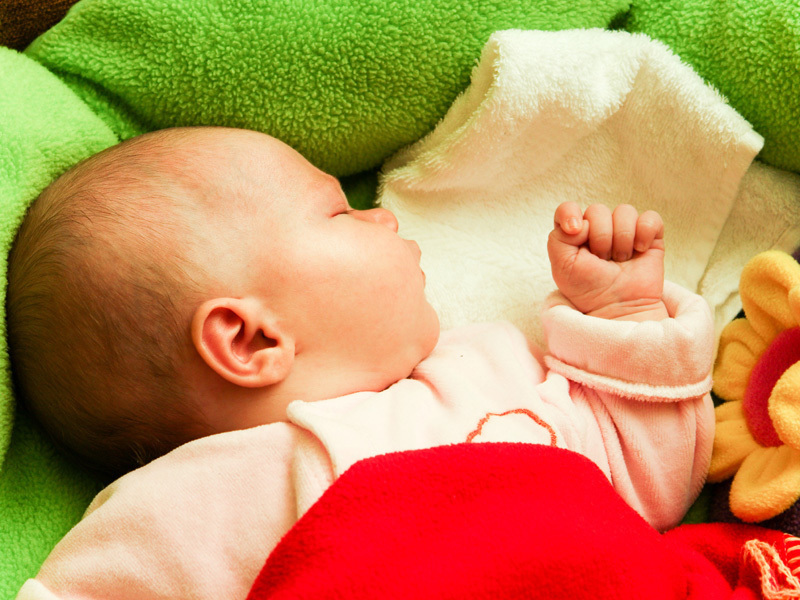 Babies of the first year of life are categorically prohibited from using No-shdi
Babies of the first year of life are categorically prohibited from using No-shdi Children 6-12 years old : the maximum daily dose is 80 mg( or 2 tablets of 40 mg).It is recommended to take 1 tablet 2 times a day.
Children over 12 years of age : The recommended daily dose is 160 mg divided into 2-4 doses. Usually, the doctor prescribes 1 tablet( 40 mg) 2-4 times a day.
IMPORTANT: It should be remembered that No-shpa is an emergency medicine for the baby and a temporary measure to relieve the state of health on the background of the main therapy. The drug lasts usually 4-8 hours.
No-shpa in children's practice: video
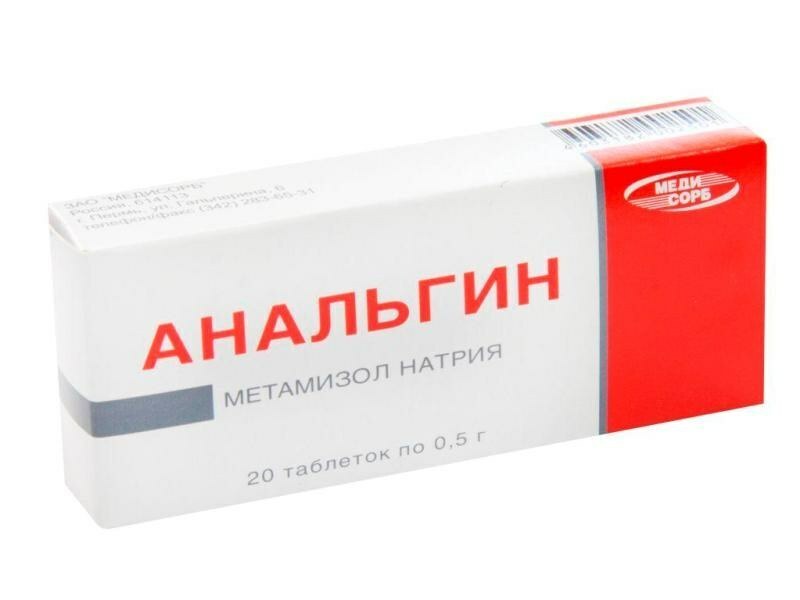 Analgin in tablets
Analgin in tablets Analgin in children with headache
Analgin is a drug known for its analgesic effect, almost to everyone, since the time of our grandparents.
Contains active substance - metamizole sodium. It is used for severe manifestations of pains of different etiology: migraine, toothache, renal colic, headaches, painful sensations during menstruation, for pain relief after surgical operations.
IMPORTANT: At present, many countries have eliminated metamizole sodium( analgin) from medical practice because of the risk of a severe complication of agranulocytosis.
Analginum is available in the form of tablets, rectal suppositories, injectable solutions. Metamizole sodium is part of many complex medicines.
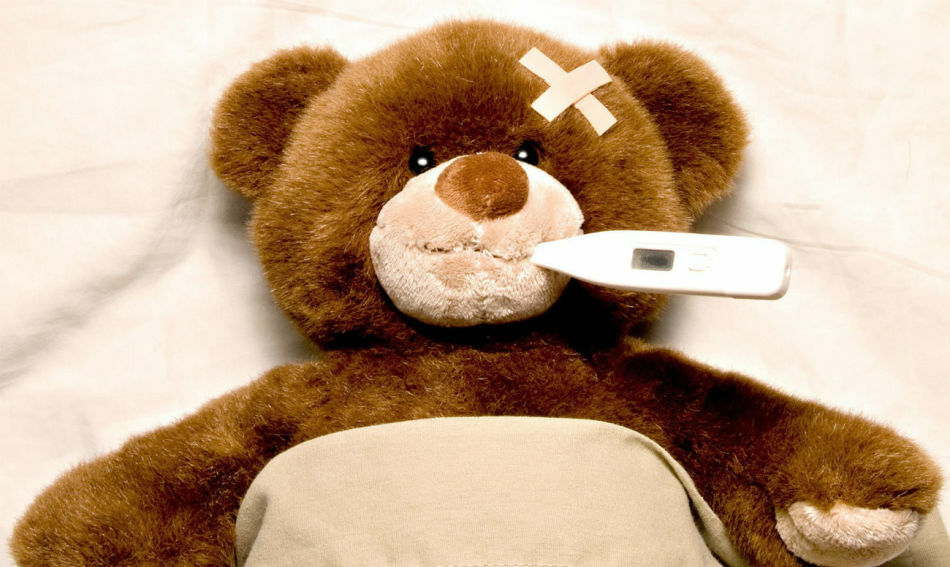 Analgin is used in children's practice in exceptional cases.
Analgin is used in children's practice in exceptional cases. In children's practice, preparations containing metamizole sodium are used in extreme cases due to a strong toxic effect on blood composition. Many foreign countries have restricted the use of the drug in children: metamizole sodium is not prescribed for children under 14 years of age. In the Russian Federation, age limits reach 6 years.
The recommended infant dose is 5-10 mg per 1 kg of the child's weight. The drug is taken 3-4 times per day.
Treatment with analgin should not exceed 3 days.
Special instructions for the reception Analgina
- Bronchospasm and bronchial asthma are contraindications for the use of the drug
- When taking the drug for more than 7 days should monitor the blood composition
- Analginum can not be used for acute pain without clarifying the cause of the pain
- When treating children under 5 years old, takingcytostatic medicines, treatment with metamizole sodium should be accompanied by compulsory medical supervision.
- . Use of Analgin in children's practice shouldbut to pass as prescribed by the doctor in exceptional cases
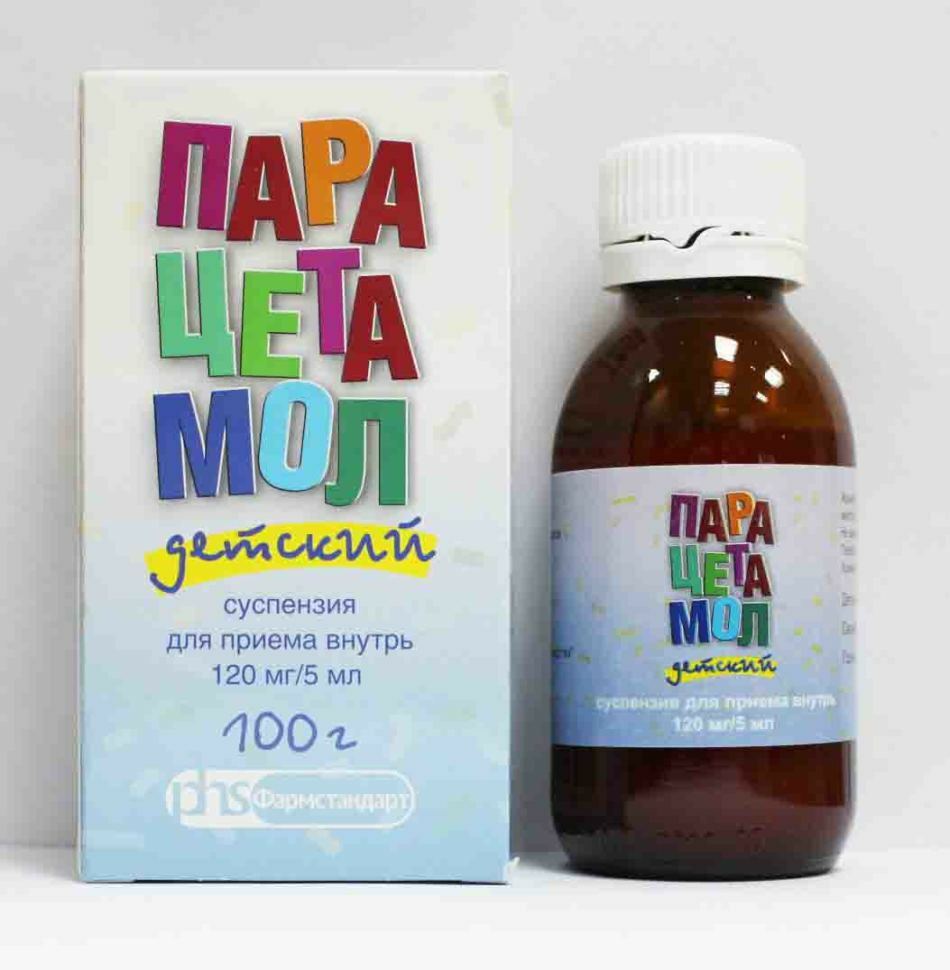 Pediatric suspension Paracetamol
Pediatric suspension Paracetamol Paracetamol for headache to children
Paracetamol - the drug has antipyretic, analgesic and moderate anti-inflammatory effect.
It is widely used in the form of many medicinal forms: tablets, capsules, children's syrups and suspensions, suppositories. Paracetamol is used as a monopreparation, and in combination with other active substances to potentiate the effect.
IMPORTANT: Pediatricians all over the world believe Paracetamol is the best way to reduce temperature. In addition, the drug is used as a soft analgesic medicine for children.
Paracetamol is widely used in children's practice to eliminate pain syndrome: headaches, dental, neuralgic, articular and other pains. The drug is also prescribed as an antipyretic agent for lowering the temperature.
IMPORTANT: Paracetamol is only an emergency aid for moderate pain and high fever. The drug removes symptoms only for a while and involves the treatment of the underlying disease.
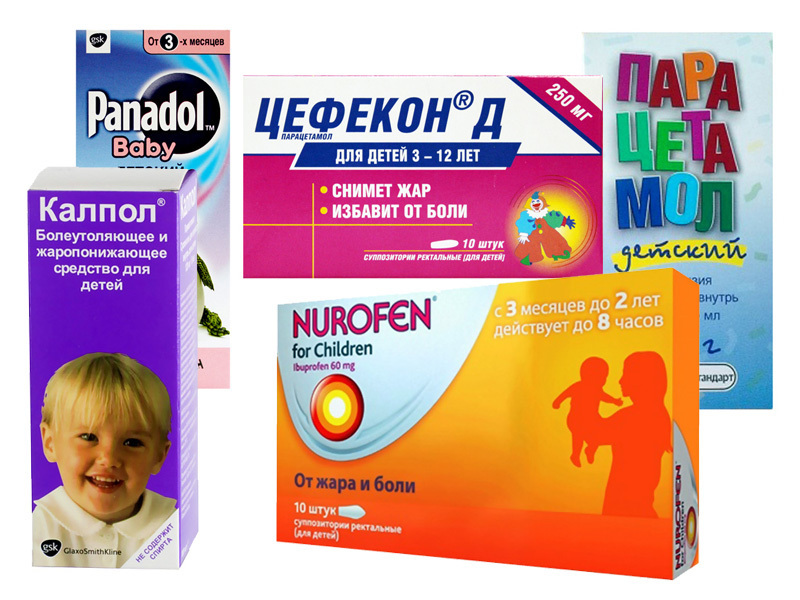 Dosage Forms Paracetamol
Dosage Forms Paracetamol Dosage Forms and Dosages
Paracetamol in tablets
Paracetamol in tablets is dispensed in dosages: 0.2 g, 325 mg, 0.5 g. Dosage form Paracetamol in the form of tablets is used for children older than 3 years.
Children 3 to 6 years old : The daily dose is calculated based on 60 mg per 1 kg of the child's weight. The dose is divided into 3-4 doses per day.
Children 6 to 12 years old : single dose 250-500 mg 3-4 times a day no more than 4 hours after taking the previous dose of the drug.
Children over 12 years old with body weight above 60 kg: single dose of 500 mg up to 4 times a day. Tablets are taken after meals.
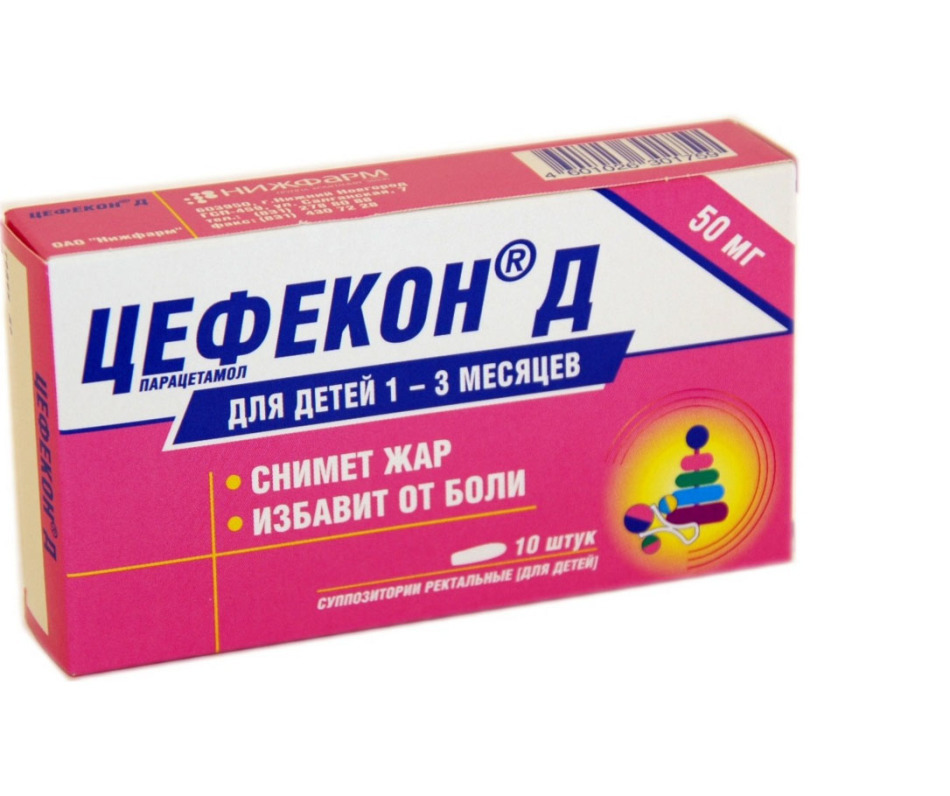 Candles with paracetamol
Candles with paracetamol Paracetamol in rectal suppositories
Paracetamol in the form of rectal suppositories is available in different dosages, calculated for different age category of children: 0, 08 g, 0, 17 g, 0.33 g.
Children from 1 month to 3 years: single dose is 15 mg of the drug per 1 kg of body weight.
Children 3 to 6 years old : 60 mg of paracetamol per 1 kg of the child's weight.
Children 6 to 12 years old : The maximum daily dose is 2 g of the drug, divided into 4 divided doses.
Candles are injected rectally at a temperature above 38 degrees 3-4 times a day with an interval of 4 hours. The medicine is best administered at night. Very convenient dosage form for young children. Pain and temperature decrease for an hour, the effect of the drug lasts 3-4 hours.
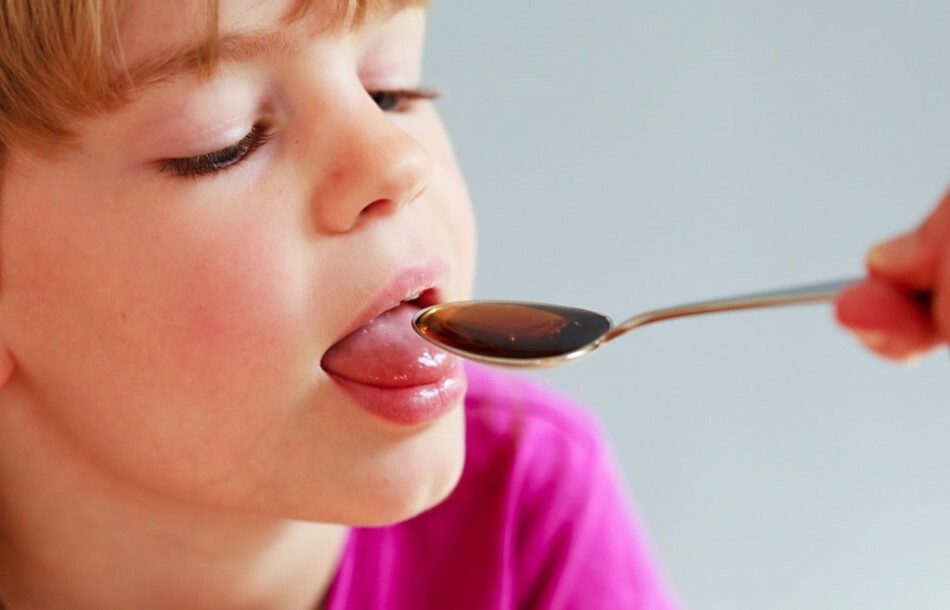 Paracetamol as a syrup
Paracetamol as a syrup Paracetamol as a syrup and suspension
Specially formulated dosage form for young children. Has a pleasant fruit taste and aroma. The syrup contains a small amount of sugar and other harmless ingredients. In the suspension there is no sugar, which makes it possible to use the medicine in case of an allergic predisposition of the child.
The drug can be used from the first months of life of the baby. A convenient measuring spoon allows you to correctly dose the medicine. The syrup and suspension is available in 50 ml or 100 ml in a dosage of 120 mg / 5 ml.
Children from 3 to 12 months of : 2.5-5ml( 60-120 mg of paracetamol) of the liquid dosage form 3-4 times a day.
Children 1 to 5 years old : 5-10 ml( 120-240 mg of paracetamol).
Children 5 to 12 years old : 10-20 ml of suspension( 240-480 mg of paracetamol).
Analogs Paracetomol
drug is available under other trade names:
- Panadol
- Tylenol
- Ifimol
- Kalpol
- Aldolor
- Daleron
- Perfalgan
- Tsefekon D
- Efferalgan
- Flyutabs
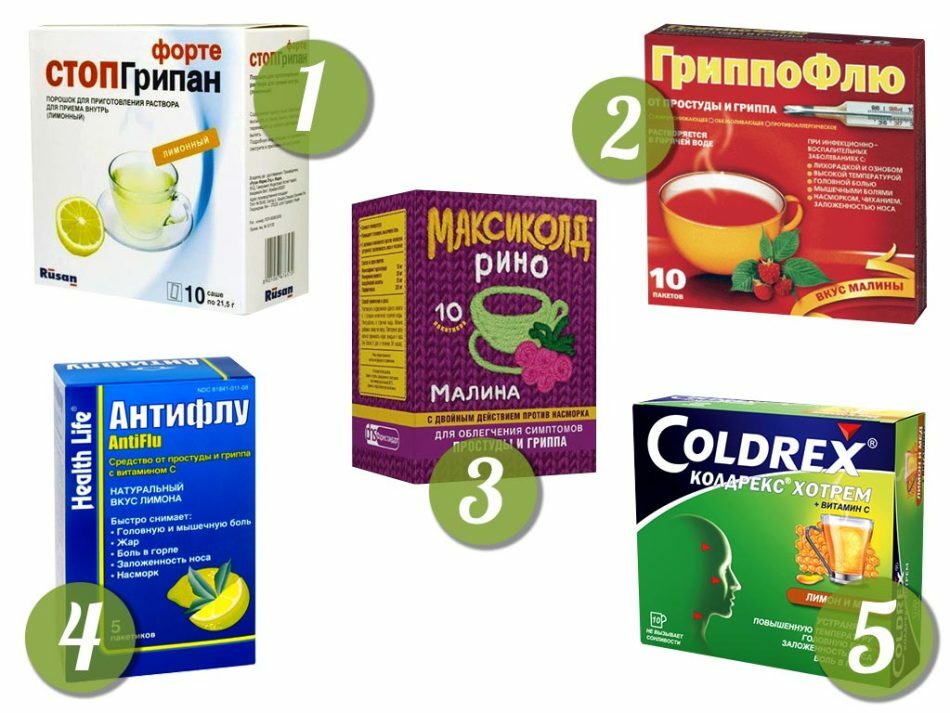 Combined means paracetamol
Combined means paracetamol Combination preparations comprising Paracetamol
- Stopgripan
- Grippoflyu
- Maxicold
- Antiflu kits
- Paravit for children
- Pharmacitron
- Fervex
- Caldrex
- Tempalgin
- Cold-flue
Aspirin or paracetamol? Doctor Komarovsky advises, video
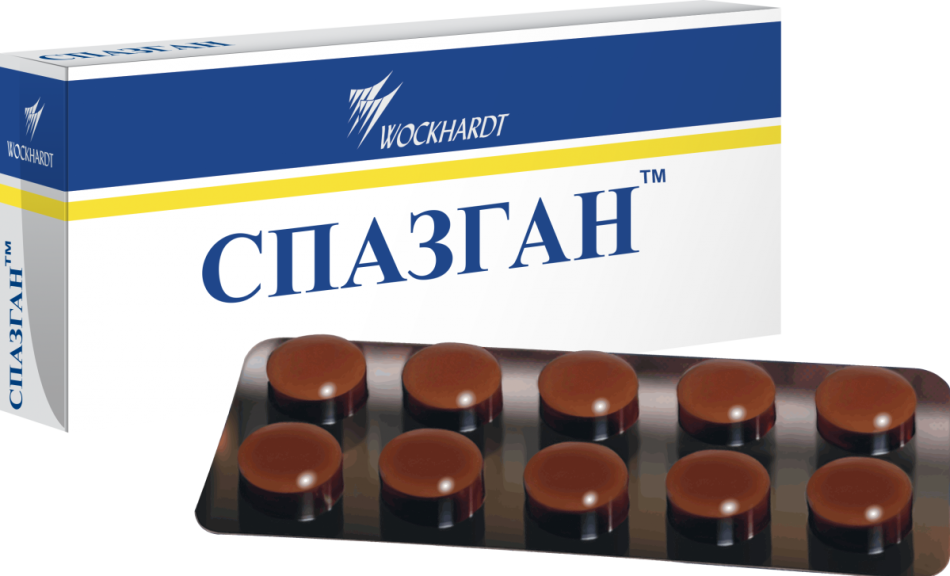 Tablets Spazgan
Tablets Spazgan Spasgan to children from a headache
Spazgan is a combined preparation of foreign production. Contains three active ingredients that have a curative effect:
- metamizole sodium 500 mg( weak anti-inflammatory, antipyretic and analgesic effect)
- 5 mg pentofenol( spasmolytic effect on smooth muscle)
- fenpiverinia bromide 0.1 mg( m-cholinoblocking relaxing effect on smooth muscle)
The combination of the three active components allows you to potentiate the action of each other and eliminate pain and spasms. The medicine is used for colic of different etiology, headaches, pain syndromes in the joints, neuralgic and other moderate pain.
IMPORTANT: In children's practice, Spazgan is used only on medical advice according to medical indications.
Pediatric dosages are calculated taking into account the age of the child. The instruction for the preparation contains recommended doses for children.
Children 6-8 years old : single dose - 0.5 tablets
Children: 9-12 years old : 3/4 tablets at a time
Children: 13-15 le t: 1 tablet
The drug is taken after a meal.3 times a day.
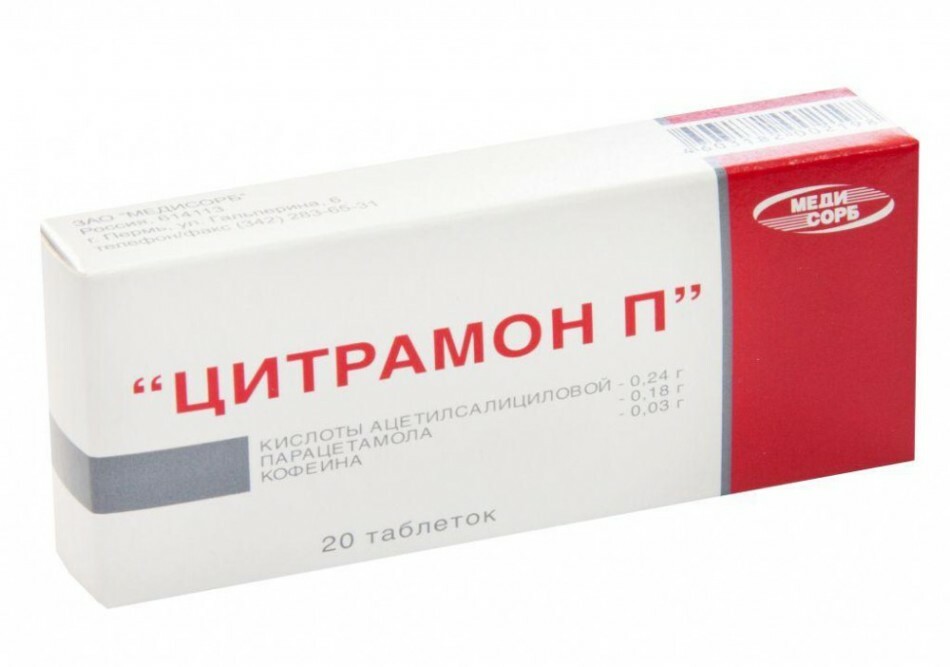 Citramon P
Citramon P Citramone to the child from a headache
Perhaps there is no drug more popular than Citramon from a headache. How many times did these pills relieve and relieve the pain in adults? Can I give Citramon to children with a headache?
Citramon is a complex complex of active substances aimed at eliminating moderate pain.
Composition of tablets Citramon:
- acetylsalicylic acid( aspirin) 0.24 g( analgesic, anti-inflammatory, antipyretic and anti-aggregation action)
- paracetamol 0.18( antipyretic, analgesic and mild anti-inflammatory effect)
- caffeine 0.03( psychostimulating, cardiotonic and analepticexposure)
- excipients: cocoa powder and citric acid
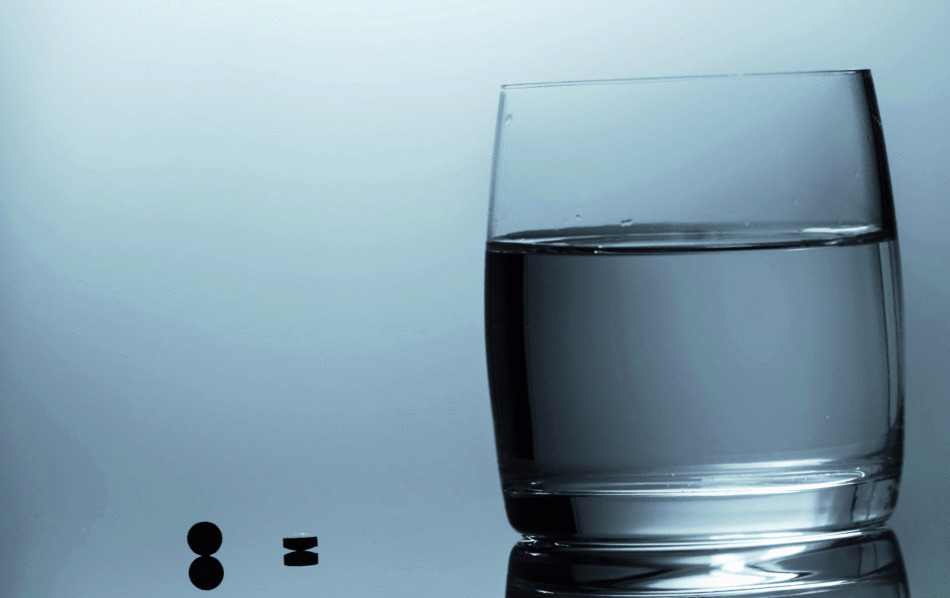 Citramon tablets are used in pediatrics since the age of 15
Citramon tablets are used in pediatrics since the age of 15 Citramone is used to remove fever and notial pains: headaches, dental, neurological, joint. Tablets help to relieve temperature, headache and muscle pain in colds. Tablets are taken 2-3 times a day after meals.
IMPORTANT: Citramone is not prescribed for children under 15 years of age. The drug contains acetylsalicylic acid. The use of aspirin in hyperthermia during viral pathology can cause a dangerous complication - Reye's syndrome.
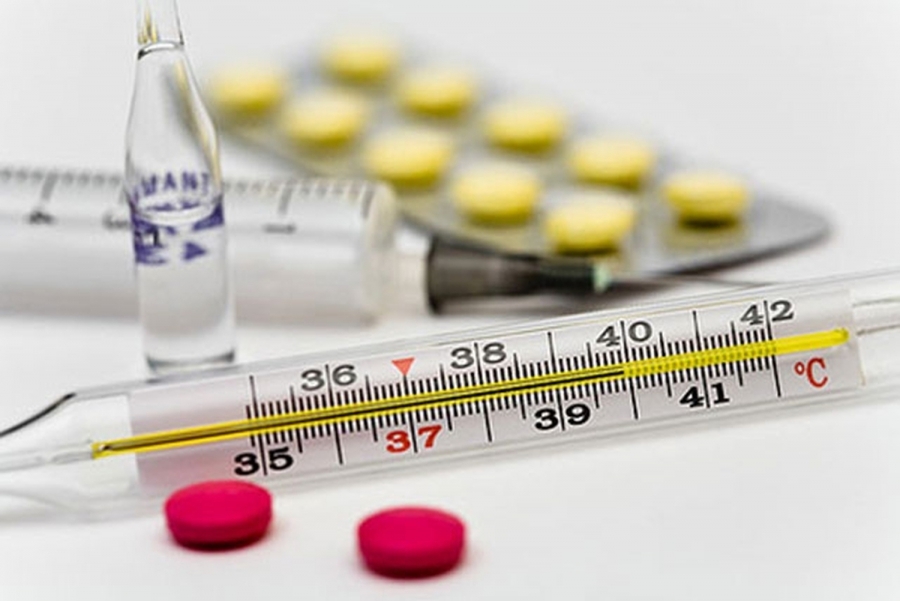 Medications for the treatment of headache
Medications for the treatment of headache Moment of a child's headache
Mig - tablets containing the active ingredient ibuprofen. The drug helps to relieve inflammation, eliminates the average pain and effectively reduces body temperature. The drug is used in dosages of 200 and 400 mg.
Tablets eliminate pain of different etiology: head, dental, muscular, neuralgic. The instant lowers the temperature in infectious processes.
Dosage tablets Migue for children
Children 6-9 years old ( weighing 20-29 kg): 200 mg per reception.
Children 9-12 years old ( weighing 30-39 kg): 200 mg per reception.
Children after 12 years of ( weighing more than 40 kg): single dose of 200-400 mg.
The medication is taken during or after meals 3 times a day 6 hours after the previous intake. Tablets are not recommended for use for more than 4 days without prescribing a doctor.
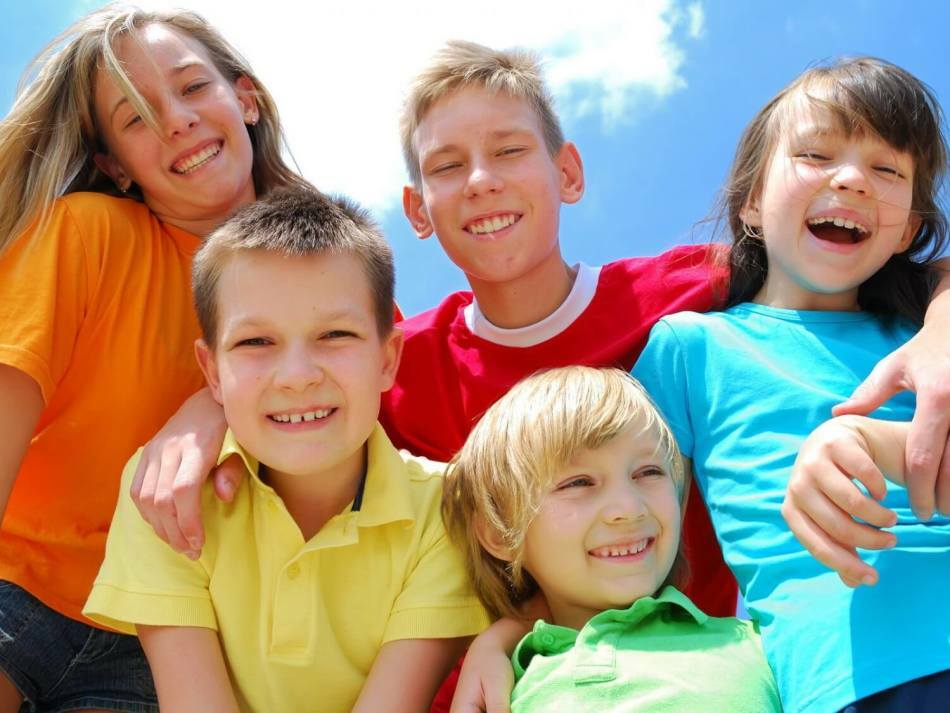 Healthy children - parents' care
Healthy children - parents' care Tips for parents
Taking medications is a simple and not always effective method of eliminating the disease With the help of pills, you can temporarily alleviate the child's condition. Regular pain in the head area can indicate serious violations in the health of the child. Let's give some tips on how to prevent a child's headache.
- Regular age-related medical examinations help prevent many childhood diseases
- A normal psycho-emotional climate in family relationships positively influences the child's nervous system
- The correct regime of the day, nutrition, sleep, adequate rest and long walks in the open air contribute to health promotion
- Active rest, sports activitiesand hardening procedures - the best prevention against headaches
